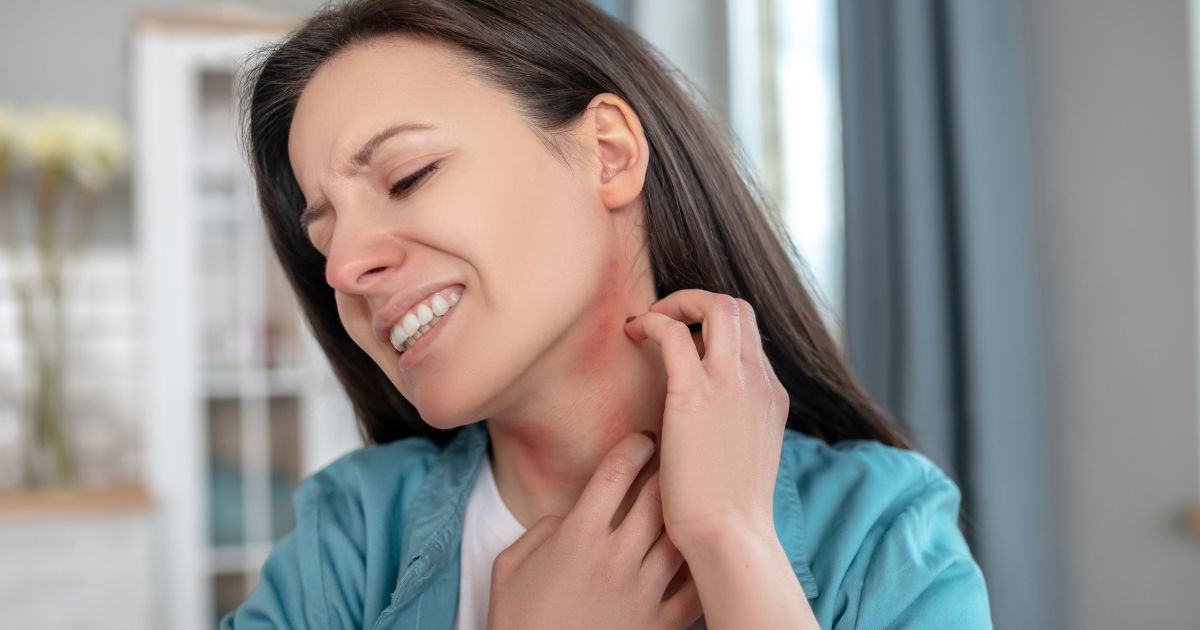September wraps us in the warm coat of autumn and brings with it captivating colors and scents. For many people, it's a favorite month, but for allergy sufferers, this time can be accompanied by unpleasant allergic symptoms. In this article, we will look at, what the most common allergies in September are.

What Are Allergies and How Do They Develop
Allergies are disproportionate reactions to substances that are harmless to most people. The immune system of allergics perceives these substances, called allergens, as dangerous and activates a defense mechanism. This leads to the release of histamine and other chemicals that cause unpleasant symptoms, such as itching, sneezing, watery eyes, and in worse cases, even severe breathing problems.
TIP: Not sure if you have an allergy? Read our article on how to recognize allergies.
Most Common Allergens in September
September is a period when many plants begin to prepare for winter and release pollen into the air. This is a problem especially for allergy sufferers who suffer from pollen allergies. Among the most common allergens in September are definitely pollens, but also dust mites and molds, which can trouble allergy sufferers year-round.
- Plant Pollen: Although the pollen season in September is not as strong as in previous months, many allergics still face significant problems during this period because pollen particles are still in the air. These tiny particles penetrate the eyes, nose, and lungs. The result is unpleasant symptoms such as respiratory difficulties, runny nose, itching and redness of the eyes, and more. In September, allergies can be caused by amaranth, chamomile, artemisia, corn, common reed, nettle, ribleaf, ambrosia, and Ccckfoot grass.
- Dust mites: Dust mites are microscopic arthropods that are often found in domestic environments, especially in bedding, pillows, mattresses, and carpets. Their excrement, which contains allergens, is the main trigger of allergic reactions. When these allergens are inhaled or come into contact with the skin, they can cause sneezing, rhinitis, itchy eyes, hives, and even asthmatic difficulties.

Molds: Molds are microscopic fungi found both outdoors and indoors. Moist and warm environments, such as bathrooms, kitchens, and basements, are ideal for their growth. An allergic reaction is caused by inhaling molds or their particles, which can irritate the respiratory tract and cause allergic rhinitis. Some people may experience more serious symptoms, such as cough and asthma problems.
Common Allergy Symptoms in September
The most common allergic reactions in September can manifest in various ways and in different areas. Among the most common allergic symptoms and reactions are:
- Skin: Allergies often manifest on the skin in the form of hives. Another common reaction is contact dermatitis, where the skin becomes red and swollen in areas that came into contact with the allergen.
- Respiratory Tract: Allergens inhaled can cause reactions in the respiratory tract. This can include sneezing, rhinitis, itching, and a stuffy nose. For some individuals, allergies can lead to asthma and other difficulties such as shortness of breath or coughing.
- Eyes: Allergic reactions often manifest as itching, redness, and tearing of the eyes.
- Systemic Reactions: Allergic reactions in some individuals can cause overall symptoms such as fatigue, nausea, dizziness and even anaphylactic reactions.
Specific Allergic Symptoms in September
The main allergens during this period are plant pollens, dust mites, and molds. So, allergies mostly manifest in the respiratory system and skin. It's important to note that each allergic reaction can be individual and depends on the allergen and the sensitivity of the specific person. If you suspect an allergy, it's advisable to seek medical assistance for proper diagnosis and allergy management.

Protecting Yourself from Allergies in September
We have a few tips for you that even allergy sufferers can use to enjoy late summer and avoid allergic symptoms.
- Monitoring Pollen Forecasts: With forecasts, you can know the current pollen concentrations in the air and prepare for increased pollen activity. An excellent helper is a personal air purifier to wear around your neck, which cleans the air in your immediate vicinity.
- Avoiding Contact with Allergens: If possible, avoid outdoor activities during times of high pollen concentration. If you must go outside, it's recommended to wear protective glasses and a respirator or nano mask to minimize the inhalation of allergens.
- Clean Home Environment: Indoors, you can maintain better air quality with the help of air purifiers, dehumidifiers, and regular ventilation. Regular cleaning and laundering can help reduce the presence of allergens in your space.
#produkty#https://www.nanospace.store/anti-dust-mite-bedding/
TIP: Did you know that you can get mite-proof bedding? You can find them in our online shop.
Allergies in Children in September
September can be a challenging month for children with allergies, especially as the school year starts. Allergies can impact their school performance and overall well-being. It's important to pay attention to their needs and ensure they have adequate protection and address any allergies that may arise. If you notice unusual behavior associated with allergic symptoms, seek medical help.
TIP: Do your children have allergies? Find out how to recognize and manage allergies in children and infants.
Emotional Impact of Allergies in September
Allergies don't just affect physical health, but can also have an emotional impact. Unpleasant symptoms can lead to frustration, fatigue, and even a sense of isolation. Therefore, it's important to address allergies in a timely manner and keep your home and environment as allergen-free as possible.
Learn More About Allergies:
- How to Recognize Allergies
- Dust Mite Allergies
- Feather Allergies
- Dust Allergies
- Identifying and Managing Allergies in Infants and Children
- Combined or Cross-Reactive Allergies
- Pollen Calendar
- How to Prepare for Allergy Season
Frequently Asked Questions (FAQ)
1. What are the most common allergens in September?
In September, the most common allergens are pollen, dust mites, and molds.
2. How can I tell if I have allergies in September and not just common cold or flu?
Allergy symptoms in September differ from symptoms of viral illnesses. Typical symptoms include sneezing, itchy eyes and nose, watery eyes, and a runny nose without fever.
3. Why do allergies in September manifest more than in other months?
September is a time when many plants begin to prepare for winter and release more pollen and spores, which can trigger allergic reactions.
4. What are the typical symptoms of pollen allergies in September?
The typical symptoms of pollen allergy in September are itchy eyes, sneezing, runny nose, stuffy nose, irritated mucous membranes, and watery eyes.
5. Can air pollution affect allergies in September?
Yes, air pollution can worsen allergies in September as it irritates the respiratory tract and increases sensitivity to allergens.
Sources
- Kalabusová, B., 2014. Alergie na pyly. Med praxi, 11, pp.104-105.
- Janíčková, H., 2009. Alergie na roztoče a plísně. Pediatr. pro Praxi, 10(3), pp.163-166.
- Li, J.T., 2002. Allergy testing. American family physician, 66(4), pp.621-625.
- Bruker, M.M., 2000. Jak se zbavit alergie. Bratislava: Eko-konzult.
- Niggemann, B. and Beyer, K., 2014. Factors augmenting allergic reactions. Allergy, 69(12), pp.1582-1587.

